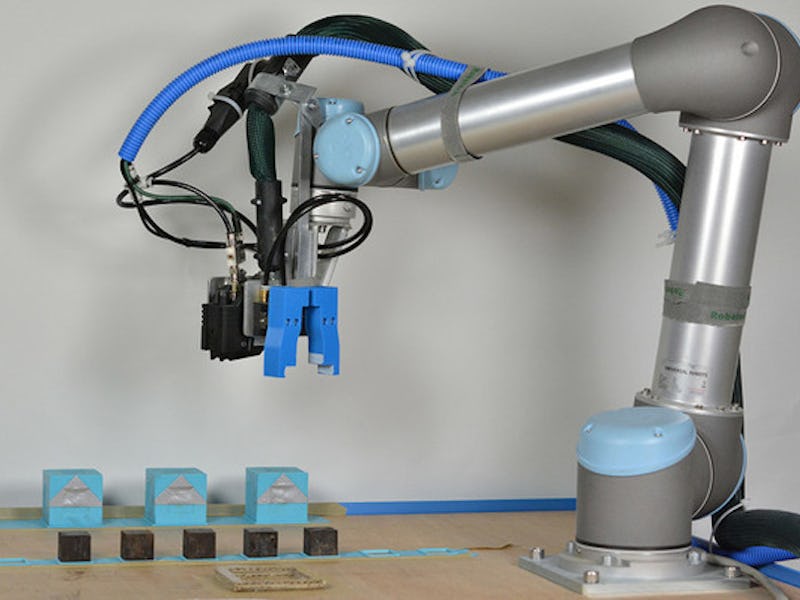This Robot Arm Can Build Its Own Robots and Redesign Them to Be Better
Let's treat this mother robot well.

Welp, the machines have gone and reproduced. Dr. Fumiya Iida of the University of Cambridge has developed a robot that can design smaller, moving robots and improve on those designs in their future generations. On the matter of whether or not this creation will usher in the robot apocalypse, Iida and team write, with a degree of certainty somewhere shy of absolute: “We believe not.”
Today the scientists published a blog post outlining their research into mother-and-child robotics. The project saw the development of a robotic arm that can assemble in various arrangements small cubes with motors inside, creating “children” robots that can scoot around an environment. The “mother” robot autonomously learns which cube configurations perform best at getting around, then builds further generations of robots by incorporating that information to improve on its designs.
The researchers had the robot repeat its task hundreds of times, creating generation after generation of young baby robots, each one marginally better at getting around than the last. By the time the mother robot created its final generation of crawling cubic children, they were crawling twice as fast as they were at the outset. It’s a wild demonstration of natural selection techniques refining digital DNA. You could be forgiven for finding it spooky, but Iida says there’s no cause for alarm.
“[Is] it too dangerous to have robots evolving by themselves?” reads his blog post. “We believe not. The aim of our research is to engineer the underlying mechanisms of creativity. We wanted to know how machines can handle unknown objects, how new ideas and designs can emerge from a statistical process, and how much time, energy, raw materials and other resources are needed to create anything truly novel.”
While robots that can engineer their own evolution might one day rise to the occasion to build something fearsome and menacing to humankind, this is not the robot to do it. “[Engineering] is a bottom-up process to build up technology piece-by-piece by understanding why and how things work,” the post continues. “So unlike biological creatures, our evolving robots are still, and will always be, within our expected boundaries and control.”
The implications for machine learning and self-engineering may be the most enticing prospect here of successive generations of steerable cubes. The greatest part about making mistakes has always been learning from them. Automating that process could hand off Edison’s proverbial 99 percent perspiration to a tinkerer that never has to break a sweat.